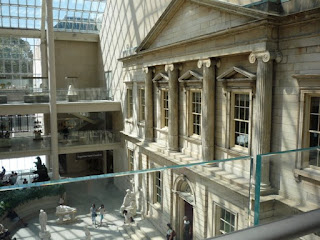Search This Blog
A strolling guide to New York City by writer and photographer Teri Tynes. Active during the years 2007-2021, Walking Off the Big Apple plans new walks away from the city in the summer of 2025.
Posts
Showing posts from July, 2009
Coming this summer 2025
A Hudson River Camino - a cultural and spirit-filled pilgrimage up river.
Finding Balance in MoMA's Sculpture Garden
- Get link
- X
- Other Apps
The Time and Place for James Ensor, Unmasked
- Get link
- X
- Other Apps
French Lessons: Visiting the Metropolitan Museum of Art's New American Wing, and Paris Photographs from the Second Empire
- Get link
- X
- Other Apps
New York, in Vintage Black and White, and Photography Posts on Walking Off the Big Apple
- Get link
- X
- Other Apps
American Cultural History on Walking Off the Big Apple: A Chronological Guide to a Selection of Posts
- Get link
- X
- Other Apps
The "fresh, green breast of the new world" - Mannahatta/Manhattan
- Get link
- X
- Other Apps
From The Great Gatsby: Nick Carraway's Walk, A Slideshow and A Map
- Get link
- X
- Other Apps
Sunday Excursion on the 5th of July: Bicycling Off the Big Apple
- Get link
- X
- Other Apps
A Visit to Astoria, Then & Now: The Marx Brothers at Paramount Pictures and Notes on Contemporary Attractions
- Get link
- X
- Other Apps
June 11, 2025 in Beacon, NY

On a day trip from NYC









